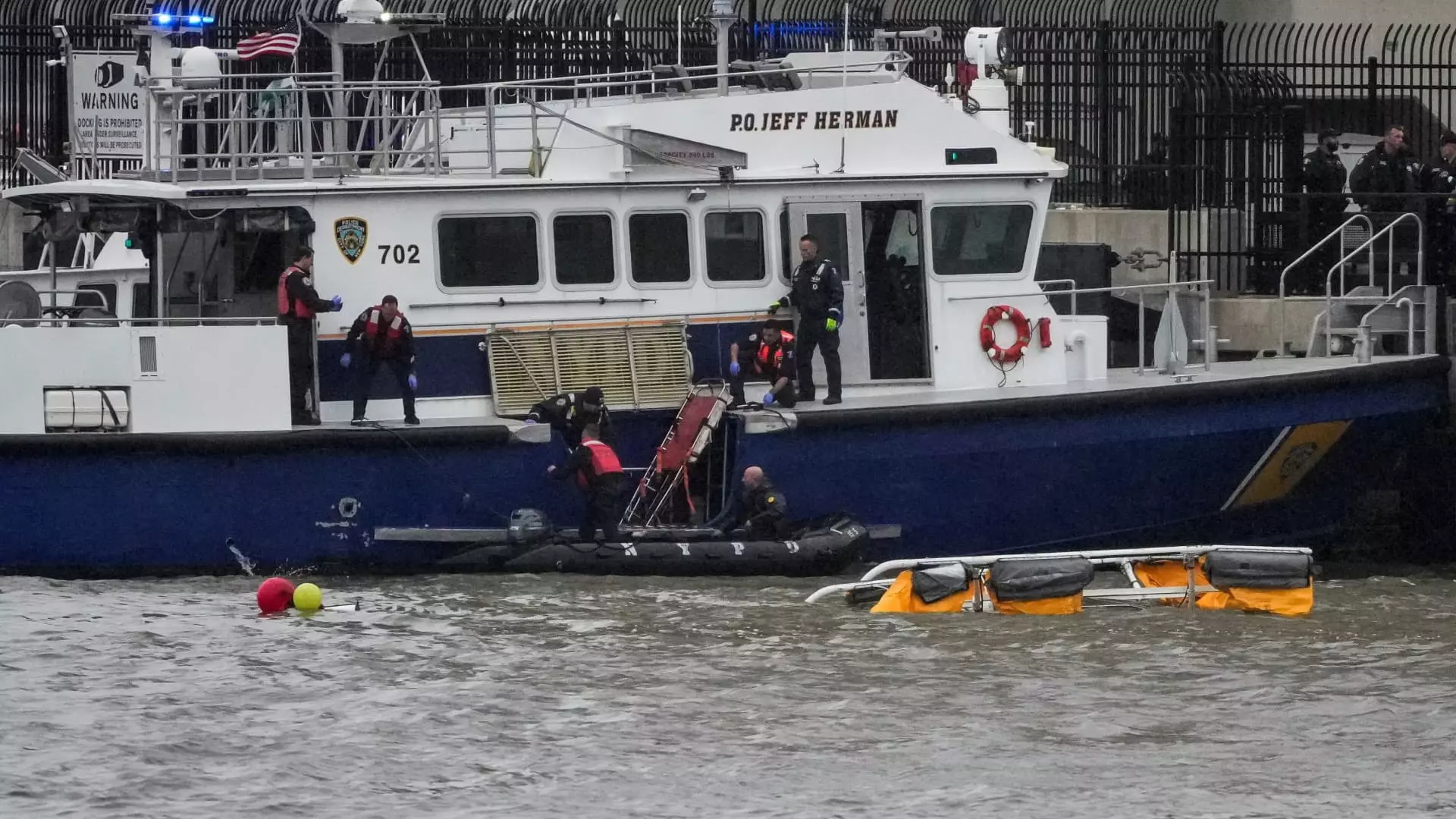On a fateful day, a helicopter plunged into the Hudson River near Manhattan, signaling a devastating accident that left five of the six occupants dead. Eyewitness accounts confirm the horrific moment when the aircraft was observed flipping upside down in the water, immediately capturing attention on social media platforms. The New York Police Department (NYPD) promptly warned residents of impending traffic delays in the vicinity as emergency vehicles rushed to the scene in a desperate bid to save lives.
Understanding the Aircraft and Its Flight Path
The helicopter involved in this tragic incident was identified as a Bell 206L-4 LongRanger, a model commonly associated with both commercial and private air travel. Flight tracking data indicated that the helicopter was executing typical routes which are often frequented by sightseeing tours. However, questions loom regarding the nature of this particular flight. Had it been a routine tour, or was there a more sinister cause lurking behind its tragic descent?
Witness reports reveal terrifying details; one individual noted seeing a rotor blade detach, resulting in an uncontrollable drop of the aircraft’s nose. Such malfunctions, while rare, highlight the inherent risks involved in aviation, especially as it pertains to aging models and potential mechanical failures that can suddenly turn a routine flight into a disaster.
The Aftermath and Investigation Initiated
The immediate aftermath of the crash triggered a swift response from the National Transportation Safety Board (NTSB), which announced its commitment to an exhaustive investigation. Collecting data and eyewitness accounts, authorities aim to piece together the sequence of events leading up to the catastrophic failure. As of now, the motivations behind the flight remain unclear, with speculation running rampant. Was it merely a leisure excursion or something else entirely? The truth is yet to be uncovered.
The tragedy not only grieves the families affected but also shakes the broader community’s confidence in helicopter travel. Incidents like this serve as chilling reminders that even in a city buzzing with activity and excitement, death can strike unexpectedly. The helicopter industry, particularly in tourist-heavy locales, must grapple with its ramifications and reinforce safety measures to prevent such calamities from occurring in the future.
Community Response and Reflections
As the dust begins to settle and the emotional toll starts to set in, New Yorkers and those affected ponder the fragility of life. Social media floods with condolences and reflections on the preciousness of moments that can be taken away in an instant. The tragic loss of life due to a mechanical failure raises questions about oversight in aviation practices, particularly for those catering to the public. There is no denying that accountability will be demanded, and correct measures must be taken to avoid repeating such fatal mistakes.
The resilience of the human spirit, however, shimmers brightly in the wake of destruction. Communities rally, offering support to the grieving families, demonstrating strength in solidarity. The investigation will ultimately guide the way forward, ensuring that lessons learned from this tragedy echo as a clarion call for change in the aviation sector.

